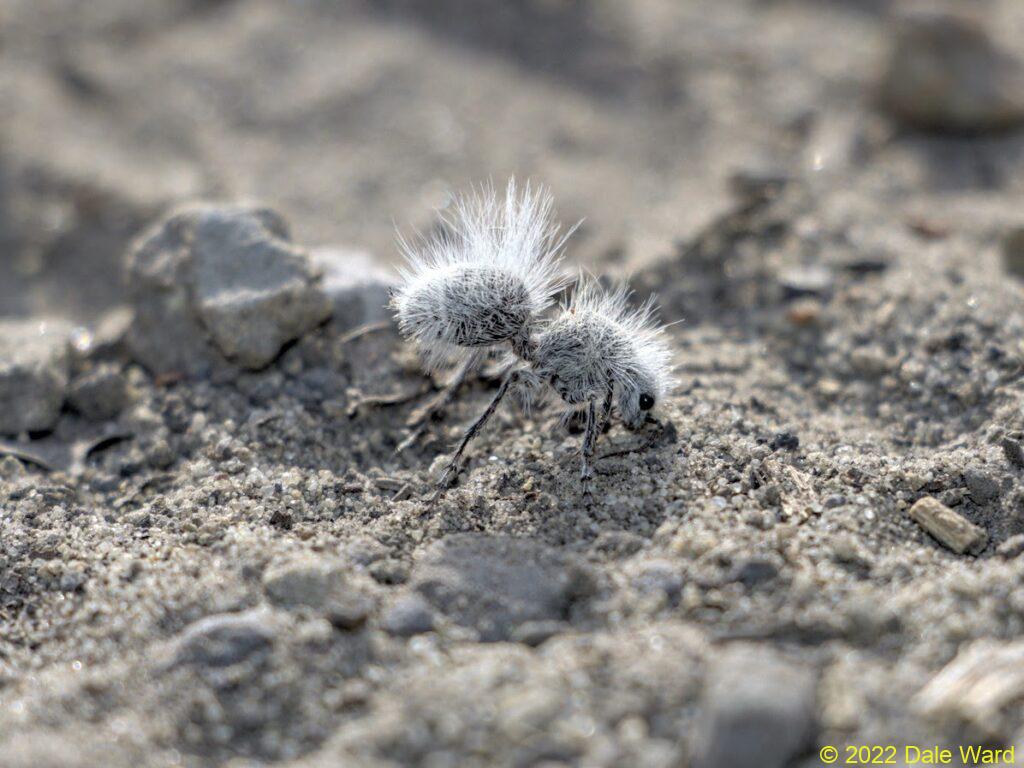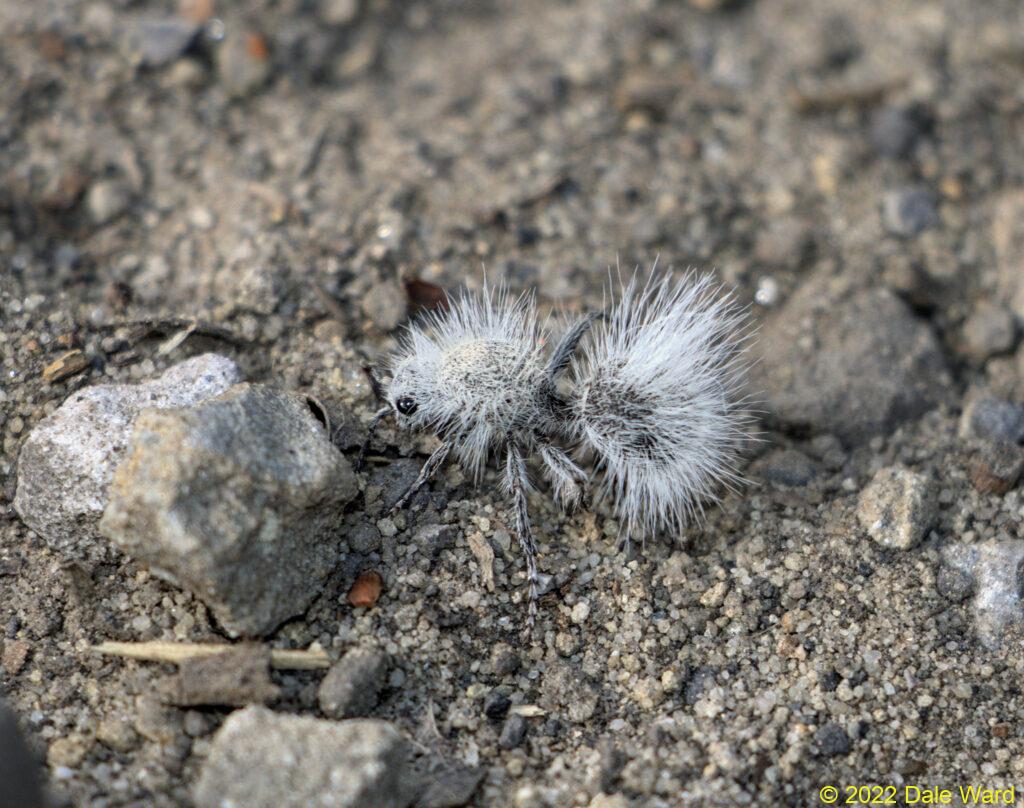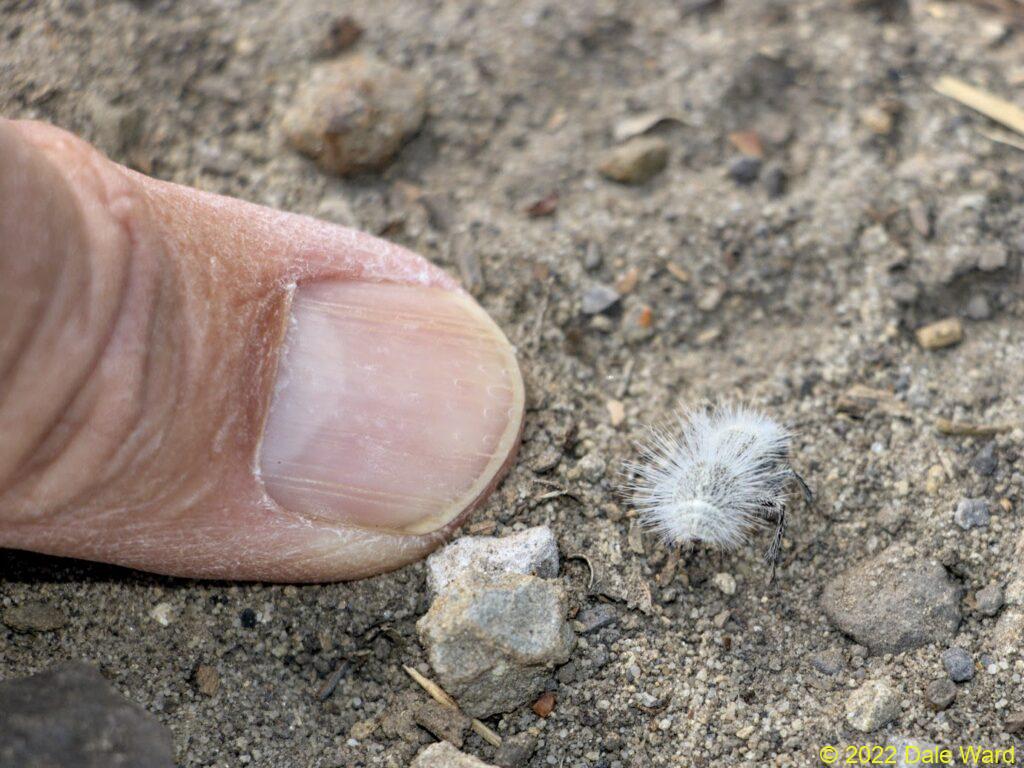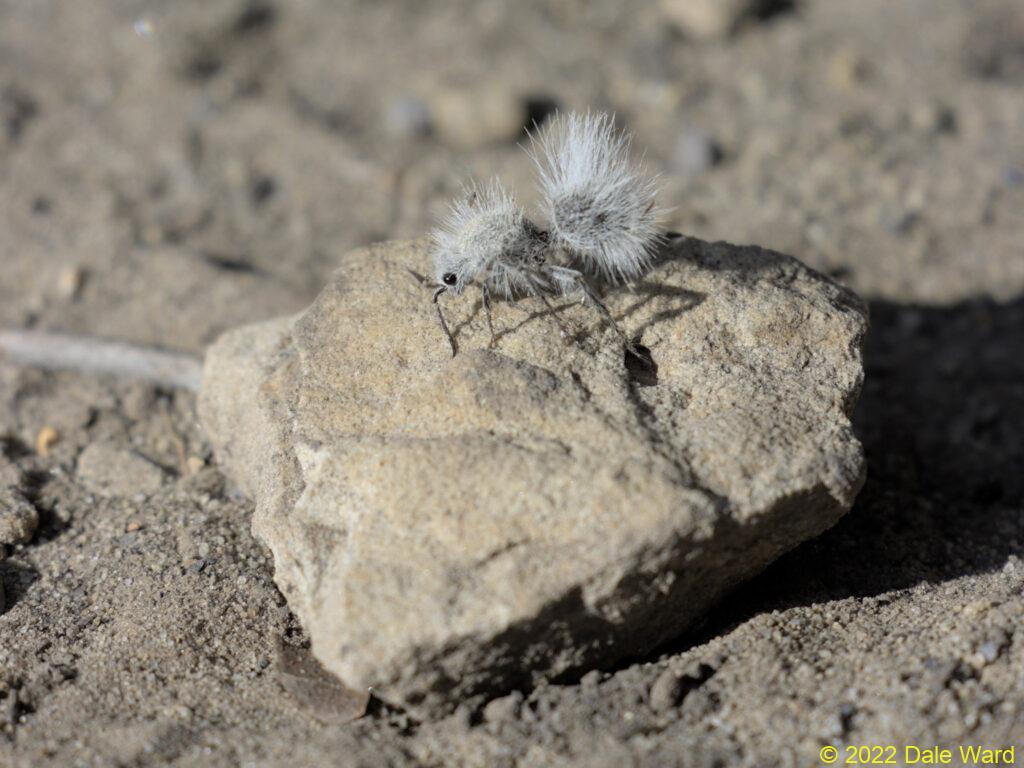Thistledown Velvet Ant - Dasymutilla pseudopappus
Yesterday (2022-10-23) I was walking along a trail in Southwestern Colorado, at an elevation of about 6200'. As I looked down, I saw a bit of white fluff in the middle of the trail, one that was moving of its own accord.
 Thistledown Velvet Ant (_Dasymutilla pseudopappus_). She kept this head-down posture for most of the time that I watched her.
Thistledown Velvet Ant (_Dasymutilla pseudopappus_). She kept this head-down posture for most of the time that I watched her.
Yesterday (2022-10-23) I was walking along a trail in Southwestern Colorado, at an elevation of about 6200’. As I looked down, I saw a bit of white fluff in the middle of the trail, one that was moving of its own accord.
I looked closer - it was a Thistledown Velvet Ant. This was cool.
 This is the type of habitat I was hiking through - Pinyon/Juniper, Great Basin Desert.
This is the type of habitat I was hiking through - Pinyon/Juniper, Great Basin Desert.
Most of the Velvet Ants I see are are red or orange, and have short, velvety hairs on them. They tend to run quite quickly and compulsively - I have a very hard time getting photos of them for that reason.
This one was covered in long, white hairs, and was moving slowly. She’d take a few steps, pause, then take a few steps, pause…
When she was paused, she would lift her gaster up into the air, and put the front of her face down onto the soil.
It’s good that we don’t have Creosote here, she looked just like a Creosote seed.
 Thistledown Velvet Ant (_Dasymutilla _pseudopappus__) slowly walking.
Thistledown Velvet Ant (_Dasymutilla _pseudopappus__) slowly walking.
She didn’t seem to be very concerned about my presence. I was able to put my finger down next to her for scale.
 Thistledown Velvet Ant (_Dasymutilla _pseudopappus__) and my thumb, for scale.
Thistledown Velvet Ant (_Dasymutilla _pseudopappus__) and my thumb, for scale.
That didn’t seem to bother her at all, so I gently scooped her up in my hand, and put her on a pebble to get a better photo. She accepted this gracefully, and chose not to sting me. A fact for which I’m quite grateful.
 Thistledown Velvet Ant (_Dasymutilla _pseudopappus__) on a rock.
Thistledown Velvet Ant (_Dasymutilla _pseudopappus__) on a rock.
I think this Velvet ant is Dasymutilla pseudopappus. I’m basing my tentative ID on the dark black coloration of the Velvet Ant’s integument. It’s my understanding that D. gloriosa has a more reddish integument.
Male Velvet Ants have wings, and no stinger. Since this Velvet Ant is wingless, it’s a female. Interestingly, I don’t think that male Thistledown Velvet Ants are white and fluffy like this. They’re red or orange, as I recall, and look a lot more like ‘regular’ Velvet Ants.
Most (all?) Velvet Ants are parasitoids of Solitary Wasps and Bees. I’m guessing that’s why this Velvet Ant kept assuming a face down posture - I think she may have been trying to detect buried Solitary Wasp nest entrances.
What a great hike this was. And ‘twas a fine, fine discovery on a lovely Fall day.
Sources:
Wilson, Joseph S., Jeni Sage Sidwell, Matthew L. Forister, Kevin A. Willams and James P. Pitts. 2020. Thistledown velvet ants in the Desert Mimicry Ring and the evolution of white coloration: Mullerian mimmicry, camouflage and thermal ecology. Biol. Lett. 16: 20200242.20200242. https://doi.org/10.1098/rsbl.2020.0242.